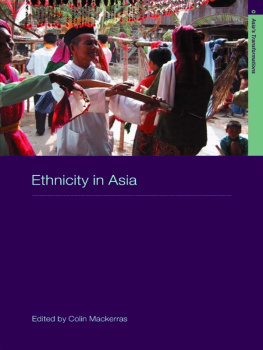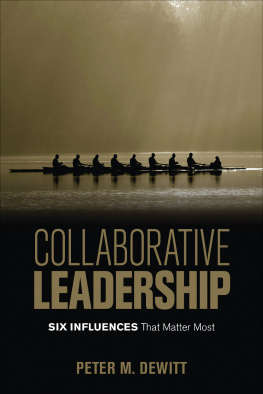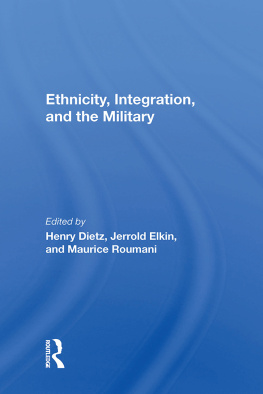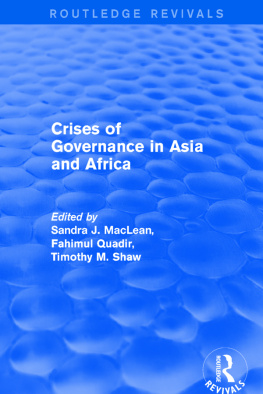First published 1981 by Transaction Publishers
Published 2017 by Routledge
2 Park Square, Milton Park, Abingdon, Oxon OX14 4RN
711 Third Avenue, New York, NY 10017, USA
Routledge is an imprint of the Taylor & Francis Group, an informa business
Copyright 1981 by Taylor & Francis.
All rights reserved. No part of this book may be reprinted or reproduced or utilised in any form or by any electronic, mechanical, or other means, now known or hereafter invented, including photocopying and recording, or in any information storage or retrieval system, without permission in writing from the publishers.
Notice:
Product or corporate names may be trademarks or registered trademarks, and are used only for identification and explanation without intent to infringe.
Library of Congress Catalog Number: 80-20324
Library of Congress Cataloging-in-Publication Data
Ethnicity and the military in Asia.
Originally appeared as a special issue of the Journal of Asian affairs.
Bibliography: p.
1. Armed ForcesAddresses, essays, lectures.
2. Ethnic groupsAddresses essays, lectures.
3. EthnologyAsiaAddresses, essays, lectures.
4. Sociology, MilitaryAddresses, essays, lectures. I. Ellinwood, DeWitt C. II. Enloe, Cynthia H. 1938-III. Journal of Asian affairs.
UB419.A78E84306.280-20324
ISBN 0-87855-387-8
ISBN 13: 978-0-87855-387-7 (hbk)
Dewitt C. Ellinwood
Cynthia H. Enloe
This collection of case studies first appeared as a special issue of the Journal of Asian Affairs . Its publication was the product of discussions that we began in London in the spring of 1975 when each of us was just beginning to comprehend how pervasive -- across time and across national boundaries -- were the ethnic imbalances within state militaries. Once back in the U.S. each of us started to urge colleagues in political science and history to take a second look at the Asian countries in which they specialized: were their militaries ethnically dissimilar to the populations they allegedly degended? Were those ethnic imbalances of recent origin or could they be traced back to colonial or even pre-colonial periods? Did the ethnic compositions seem to be the result of deliberate elite policies? What were the broader political consequences today of particular ethnic-military formulas? We were excited by the research that these questions engendered. It suggested that a whole dimension of military development, and political development generally, had been neglected.
As this book is going to press events are occuring in Southeast and Southwest Asia which demand closer attention to the ethnic compositions of states security forces (militaries, paramilitaries, and police). In Afghanistan a succession of military coups has been accompanied by desertions from the military ranks and escalating rebellions by what the foreign press unhelpfully calls simply Muslim rebels or tribal rebels. Afghanistan is a multi-ethnic country in which political power has been unequally distributed among the several ethnic communities. The military has been multi-ethnic but it would be surprising if the senior officer corps did not reflect the Pathans wider political dominance. The invasion by Soviet troops (and civilian bureaucrats) in early 1980 not only affected Afghanistans inter-ethnic and military-ethnic tensions. This action also appears, according to still skimpy reports, to be related to the Soviet Unions own multi-ethnicity, which shows up in the Soviet military in the form of ethnic Russian dominance in the officer corps and a growing reliance -- due to conscription and differential birthrates -- on Soviet Mulsim ethnic groups in the rank and file. What happens in Afghanistan furthermore is significant in the military-ethnic evolutions of two important neighboring states: Iran, whose state military dissolved in the anti-Shah revolution and whose post-revolutionary government, dominated by ethnic Persians, faces rebellions by ethnic minorities such as the Kurds and Baluchis; Pakistan, whose state apparatus is controlled chiefly by ethnic Punjabis, who have used their military influence to stifle autonomy movements among Pakistani Baluchis and Pathans. The introduction of United States, Chinese, and Egyptian military aid into both Afghanistan and Pakistan will surely have an effect on the future ethnic-military tensions in those countries.
In Southeast Asia, the border war between Vietnam and China made the Nanoi regime -- overwhelmingly ethnic Vietnamese -- nervous about its principal ethnic minorities. Tribal ethnic minorities residing near the Chinese border had been courted energetically by Vietnamese nationalists in the past, but in 1978 two tribal officers who had risen to the rank of general were demoted. Vietnams ethnic Chinese came under severe official and unofficial pressure in 1979, so that they comprised a large proportion of the Vietnamese refugees fleeing to China overland and to Malaysia by sea. Previously, Vietnamese Chinese had been treated gingerly by the Communist regime insofar as they usually were excused from military service in the North. Also in Southeast Asia the fragile ceasefire between Ferdinand Marcos Philippine regime and the Muslim rebels in the south (Moro is the designation they use to underscore their newly-articulated sense of ethnic unity) has broken down by the beginning of 1980. Attempts to bring more Muslims into the military and police had turned out to be little more than token efforts. Thus once more the military-rebel conflict in the Philippines took on the character of inter-ethnic conflict.
Seen against these contemporary developments, we feel that the studies in our collection take on added significance. To understand what is happening in these current troubles, it is necessary to know more about their antecedents. Similarly, it seemed to us very important to underscore the historical perspective in this case study approach to military-ethnic relations. While it is true that we were excited by the very descriptive richness of these research efforts, the eventual goals of any political analysis is to explain how that descriptive reality has come about. It takes a cooperative effort by historians and social scientists to increase our powers of explanation. Case studies in the historical section show, for instance, that pre-colonial and colonial state elites in numerous Asian countries thought ethnically when they designed their strategies to maintain power and expand it. The historical cases also show under what circumstances civilian regimes relied on militaries and how tenuous their militaries cohesiveness often was. Analysts writing in the second section, Contemporary Perspectives, also find it necessary to go back more than just a decade or two in order to explain how the present military-ethnic patterns came into being. Furthermore, in instances such as Singapore and Indonesia this historical sensitivity demonstrates that ethnic compositions of militaries are far from fixed. They can and do change, frequently due to very self-conscious decisions taken by successive governments.













